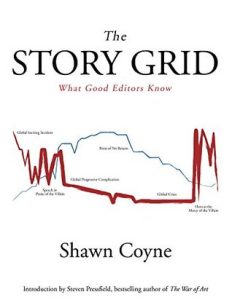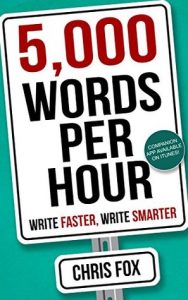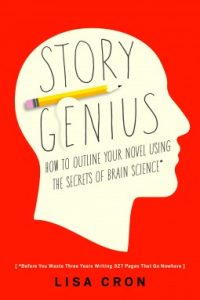
How to Finish NaNoWriMo in Two Weeks
Estimated Reading Time:
November is upon us! Another year of NaNoWriMo. For those that do not know, NaNoWriMo is the National November Writing Month. You can find out more on their website. 2018 was the first year I’ve participated since 2015. You can learn a lot in three years away from something. Needless to say, I was pretty excited to tackle the 50,000 words in a one-month challenge with all of my new experiences.
November 1st hit and NaNoWriMo began. The first couple of days I was slow at getting into the rhythm, but I found a consistent groove. Eleven days later I reached 50,450 words, an average of 4,500 per day. A number of people were curious about how I achieved this, so this blog post will shed some light on how you can do NaNoWriMo in two weeks too.
NaNoWriMo in Two weeks? How?
Let’s back up a few months, because the truth is, the writing process began before November. This does not include the first draft. You can save a ton of time during NaNoWriMo by doing some… planning!
Planning for NaNoWriMo
That headline will make pantsers shiver. Planning? That’s crazy! Plotters aren’t more effective than pantsers. Personally, I do a bit of both. There’s a lot to be said for improvisation. Before NaNoWriMo starts, you probably have some idea what you want to write about, otherwise, why else are you participating?
You’ll want to start thinking about NaNoWriMo probably a couple of months in advance, if not even further back, like in July. NaNoWriMo sends out newsletters throughout the year and reminds you about the looming November first. They encourage planning too!
While planning for NaNoWriMo, you’ll want a document (or pieces of paper) for each of the following:
- Premise and Goals: This document includes, your premise, word count goal and genre. This process is taken right out of the Story Grid book by Shawn Coyne (mentioned further down). Writing down your premise is the starting point of knowing what story you’re writing. Some of this is covered in an earlier blog post series titled ‘Want to Write a Fiction Novel?’ too.
- Character Sheets: This is the most valuable document. Character sheets are your first introduction into the people that make your novel real. Define their wants, desires, goals and struggles. The sooner you become familiar with your characters, the more intuitive their actions, and dialogue will be in your writing. Characters are covered in a blog series I wrote if you want more information on the topic.
- Outline: Now that you have a premise and your character sheets, it is time to scope out the plot. Your outline can be as unclear or as detailed as you like. I limit my chapter outlines to vague, one-pagers. Some people plot down to the beat of the novel. Find a comfort zone for you. You’re looking to give yourself a general path of where the story will go from chapter to chapter. The outline is not written in stone and chances are you’ll make changes to the story in the first draft.
- Research: I saved this as the last point, not that these bullets are in numerical order, but research is incredibly important. Depending on your genre, this could mean world building or studying an industry or learning about a specific time period. The more you research about your world/time setting, the less guesswork you have to do in your first draft. Research can also spark ideas for scenes. A more detailed blog post on research can be found here.
More Pre-planning Means Less Work in November
The planning points mentioned are all about exploring the creative work from a story and plot perspective. So when November first hits, you can focus entirely on the flow of the first draft. You’re not distracted by trying to come up with scenes, where the story is going, or getting to know your characters. You’ve done all that and have a clear roadmap on where to go and are familiar with how your characters are going to behave. You won’t be juggling a bunch of tasks in your head. You can focus on one job: writing an engaging first draft.
Don’t Edit!
Not editing is a no-brainer that is stated by many people during NaNoWriMo. I thought I’d touch base on it though to reiterate the importance of not editing. While writing your first draft, put that editor hat aside and be the writer! Sure, your draft is going to have typos, you’ll probably delete that sentence you just wrote, and that is okay. Your goal in the first draft is to create something to work with for the second and third draft when you do put the editor hat on. Make mistakes and get messy.
Writing Ritual
Life is crazy, and we all have obligations that keep us away from writing. In a perfect world, we could write all day and take our time. Because we are limited to 24 hours per day, we can only do so much before we go insane.
To fit NaNoWriMo into your day, dedicate a time to focus on your writing. Write at this time every day. This will become your writing ritual for the month. The dedicated time could involve getting up an hour early each day or going to be an hour later. The routine might be split into fragments, possibly a bit during your lunch break or just before dinner. Either way, set some time aside every day and put that phone away. If you need more info on distractions, check out a blog post I wrote on it.
Slow and Steady Wins the Race
Let’s reference that old fable involving the tortoise and the hair. NaNoWriMo is more like a marathon than it is a sprint. Keep yourself at a steady pace and track your word count, NaNoWriMo has a ton of fun stats to help you plan your progression. Write each day consistently and don’t over-do it one day just because you can. You’ll risk burning yourself out for days to come and set yourself back.
During NaNoWriMo, I split my writing sessions into one-hour sessions by removing my phone, turning off my email and turning on some music. Some days I did two-hour sessions, depending on how the rest of my day was scheduled. After an hour I usually need to step away from writing to clear my head.
Learning, Reading, Improving
Over the course of this year, I got my hands on some resource material that explored methods of writing better stories, writing with more precise goals and writing faster. These books were massive contributions for me to finish NaNoWriMo in 11 days.
The Story Grid: What Good Editors Know by Shawn Coyne

Truthfully, I was unaware of this book until a good friend, and fellow author gave it to me. He highly recommended the approaches it covered, so I gave it a go. The way Shawn Coyne systematically breaks down a book by clear, obtainable goals, was a major eye-opener. It gets pretty technical, and I have yet to apply all of it. There are a lot of powerful methods you can use from the book before you even start your first draft.
5,000 Words Per Hour: Write Faster, Write Smarter by Chris Fox

Pretty bold title hey? Chris Fox’s book has caught my eye for a good year or so, and I kept putting it off. After reading Story Gird, I figured I should finally give it a go. My writing speed wasn’t anywhere close to what I wanted. I’d be impressed if I could do 1,000 words in an hour. This book offers insight into how you can increase your speed by tracking your words per minute, remove distractions and set up a writing ritual. Ultimately it comes down to writing more frequently will improve your writing speed.
I have yet to reach the wonderful 5,000 words an hour (or apply everything mentioned in the book), but this resource did double my word count per hour. During NaNoWriMo, I averaged about 2,000 words an hour. Some days I did a bit more than that.
Story Genius: How to Use Brain Science to Go Beyond Outlining and Write a Riveting Novel by Lisa Cron

I picked up this book in October, so I haven’t finished it. So far it is worth the read. This book proposes complete opposite techniques mentioned in the Story Grid and 5,000 Words Per Hour by focusing on your protagonist internal story and less on external plotting events.
Summary of Finishing NaNoWriMo in Two Weeks
To recap what we covered:
- Pre-Plan: This can be as detailed or as minimal as you want. Usually, the more you outline, the less work you have during NaNoWriMo. Study everything you can about your book, genre and time setting. If it is fantasy or science fiction, research often transcribes to world building. You’ll want to start pre-planning a couple of months in advance to give yourself plenty of time to explore.
- Ritual: During NaNoWriMo keep a consistent routine. This is your new religion for the month, do it every day and keep at it. Don’t over-do it one day and exhaust yourself. You will cover more words over time.
- Read: Resources are significant. Always practice and continue to learn as a writer. You’ll never stop finding ways to improve.
Comments? Additional Tips?
If you have questions, feedback or have insights into writing the first draft quickly, share them in the comments! We’d love to hear it.

About Konn Lavery
Konn Lavery is a Canadian author whose work has been recognized by Edmonton’s top five bestseller charts and by reviewers such as Readers’ Favorite, and Literary Titan.




